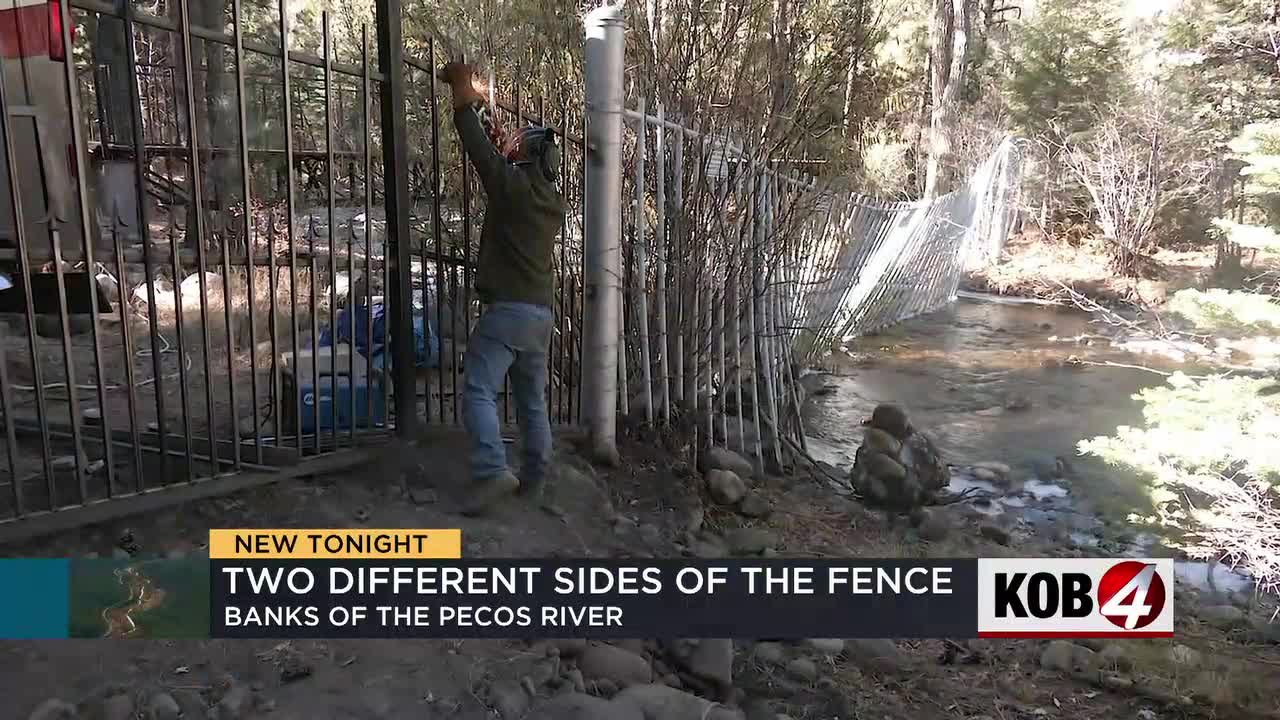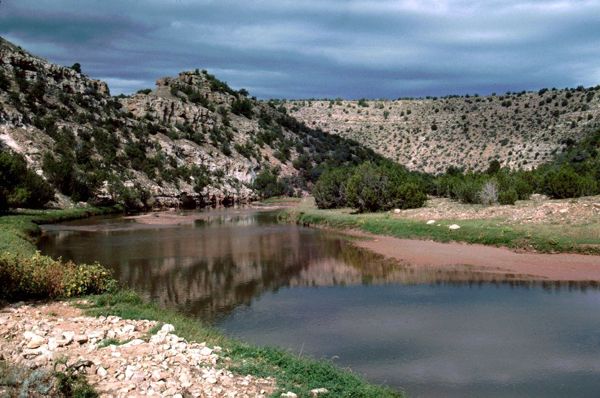
The Ghost of a Battle: Unraveling the Pecos River Legend
In the vast, sun-baked landscapes of New Mexico, where ancient rivers carve through time-worn canyons, lies a legend less defined by the clang of swords or the roar of cannons, and more by an eerie silence. It is the legend of the Battle of Pecos River, a pivotal moment in American history that, paradoxically, never truly happened. This "bloodless conquest," as it’s often described, stands as a curious testament to the power of narrative, the complexities of annexation, and the often-selective memory that shapes the legends of America.
To understand the Pecos River legend, we must first cast our minds back to the mid-19th century, a crucible for the young American republic. The spirit of Manifest Destiny, the fervent belief in America’s divinely ordained expansion across the continent, was at its zenith. This expansionist zeal inevitably clashed with Mexico, leading to the Mexican-American War (1846-1848). While the major theaters of war saw bloody encounters in Texas and deep into Mexico, a crucial campaign unfolded in the arid, untamed territories of the Southwest.
General Stephen W. Kearny, a figure imbued with the spirit of manifest destiny, was tasked with leading the "Army of the West" from Fort Leavenworth, Kansas, to seize New Mexico and California. His objective: to secure these vast, sparsely populated territories for the United States, effectively extending American dominion from the Atlantic to the Pacific. Kearny’s march was an epic undertaking, a grueling trek across hundreds of miles of prairies and deserts, his troops facing not enemy armies, but the relentless sun, scarce water, and the ever-present threat of Native American resistance.
As Kearny’s army approached Santa Fe, the capital of New Mexico, in August 1846, the stage was set for what many anticipated would be a fierce confrontation. New Mexico, though geographically distant and often neglected by the central Mexican government, had a deep-seated Hispanic culture and a population that, while diverse in its loyalties, included many who were prepared to defend their homeland. The logical choke point, a natural fortress guarding the approach to Santa Fe, was Apache Canyon, a narrow pass near the Pecos River. This rugged terrain, with its steep cliffs and limited access, offered a formidable defensive position.
Governor Manuel Armijo, the wily and often opportunistic leader of New Mexico, initially rallied his forces. Reports from Kearny’s scouts indicated that Armijo had indeed fortified Apache Canyon, deploying several thousand men, a mix of regular Mexican soldiers, local militia, and Pueblo Indian allies, along the strategic pass. The scene was ripe for battle – two armies, one determined to conquer, the other seemingly ready to resist, poised at a natural bottleneck that could easily become a killing ground.
Yet, as Kearny’s columns pressed onward, the anticipated clash at Apache Canyon dissolved not in a hail of gunfire, but in a cloud of dust and whispered rumors. When the American forces finally arrived at the pass on August 16, they found it deserted. The fortifications were abandoned, the cannons gone, and Armijo’s army had vanished. Two days later, on August 18, 1846, General Kearny marched unopposed into Santa Fe, raising the American flag over the Palace of the Governors. New Mexico had fallen without a single shot fired by the main forces.
Kearny’s "bloodless conquest" of New Mexico quickly became a celebrated narrative, a testament to American military prowess and the apparent inevitability of Manifest Destiny. It was portrayed as a clean, efficient annexation, a testament to the superiority of the American cause. Yet, the legend of the Pecos River, precisely because of its bloodless nature, invites closer scrutiny. What truly happened at Apache Canyon, and why did Armijo’s forces disperse?
The answer is complex, woven from threads of political pragmatism, internal divisions, and perhaps outright corruption. Governor Armijo was a controversial figure, known for his shrewdness and his ability to navigate shifting political winds. Faced with Kearny’s well-equipped and disciplined army, many historians believe Armijo recognized the futility of resistance. His forces, largely a hastily assembled militia, were poorly trained, ill-equipped, and lacked the morale to stand against a professional army.
Moreover, New Mexico itself was not monolithic in its loyalties. Many residents, particularly those along the Santa Fe Trail who had benefited from trade with American merchants, harbored ambivalent feelings towards Mexico City, which often seemed distant and disinterested. Some saw American rule as potentially bringing stability and economic opportunity. There were also deep-seated internal conflicts and power struggles within New Mexican society, which Armijo adeptly exploited or was himself a victim of.
The most persistent theory surrounding Armijo’s retreat, one that quickly became part of the local legend, involves bribery. It is widely rumored that Armijo was paid by American agents, possibly through intermediaries like the influential American trader James Magoffin, to stand down his forces. While direct, irrefutable proof remains elusive, the circumstantial evidence and the swiftness of Armijo’s decision lent credence to this theory. Armijo, it is said, received a substantial sum, enough to ensure his comfortable retirement to Chihuahua.
"The ‘bloodless’ narrative served both American expansionist goals and Armijo’s self-preservation," observes historian Dr. David Wetzel, "obscuring a more complex reality of internal division, strategic maneuvering, and the potential for outright corruption that defined the transfer of power in New Mexico. It was a victory of perception as much as military might."

The Pecos River incident, therefore, is legendary not for a battle fought, but for a battle averted. It embodies the quieter, often overlooked aspects of conquest: the diplomacy, the psychological warfare, the internal politics of the conquered, and the power of a superior force to compel surrender without firing a shot. It also highlights how history, particularly national history, can be sanitized and simplified to fit a triumphant narrative. The "bloodless conquest" allowed the United States to claim New Mexico with minimal immediate cost in American lives, reinforcing the idea of a divinely sanctioned expansion.
However, while no blood was spilled at Pecos by the main forces, the annexation was far from benign for everyone. The indigenous peoples of the region—the Navajo, Apache, and Pueblo—faced renewed pressures and conflicts as American settlers and soldiers moved into their ancestral lands. The cultural clash between Anglo-American and Hispano traditions created tensions that reverberated for decades, shaping New Mexico’s unique identity. The immediate aftermath also saw the Taos Revolt in 1847, a bloody uprising by Hispano and Pueblo residents against the new American authorities, demonstrating that the "bloodless" narrative was indeed a selective one.
The legend of Pecos River, therefore, stands as a quiet counterpoint to the more bombastic tales of the American West. It reminds us that legends are not merely about heroism and grand deeds, but also about the silences, the unanswered questions, and the narratives we choose to tell ourselves. It’s a story that underscores how the very absence of conflict can become a powerful historical event, shaping perceptions and solidifying claims.
Today, the Pecos River still flows through Apache Canyon, a tranquil waterway in a land steeped in history. Visitors might pass through the canyon unaware of the strategic drama that unfolded here, or rather, didn’t unfold. Yet, for those who delve deeper into the legends of America, the Pecos River offers a profound lesson. It teaches us that some of the most enduring stories are not of the roar of battle, but of the calculated retreat, the strategic surrender, and the intricate dance of power that often precedes the raising of a new flag. The ghost of that averted battle continues to whisper through the canyons, a silent sentinel to the complex tapestry of American expansion and the enduring power of its legends.



